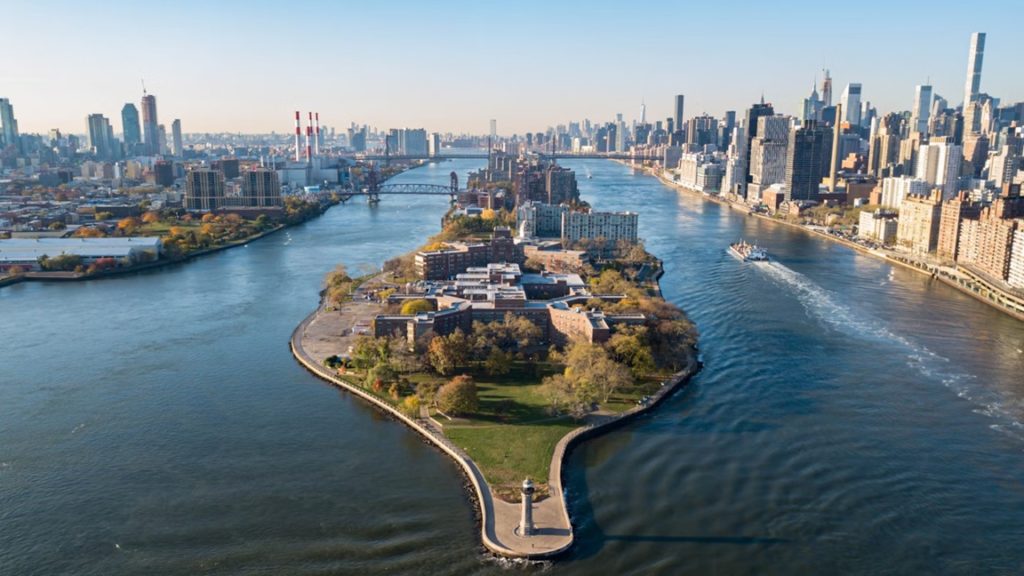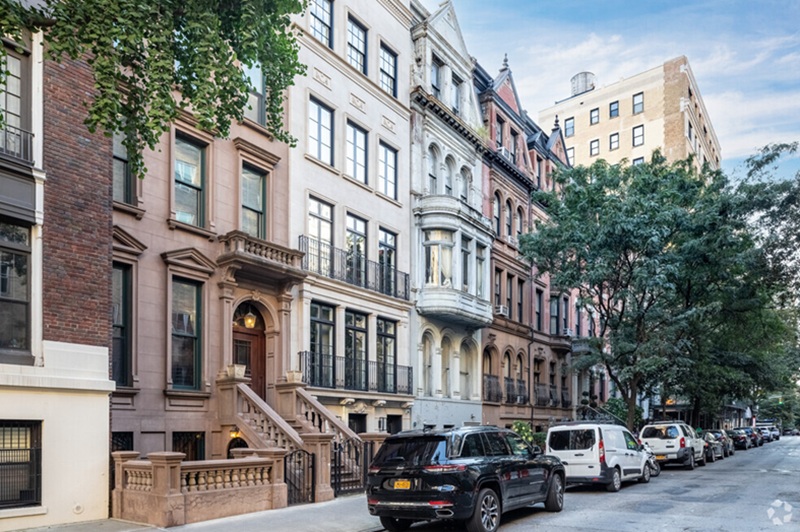
Nestled between Manhattan and Queens in the East River, Roosevelt Island is one of New York City’s most intriguing and unique neighborhoods. With its striking views, history, and distinct charm, the island offers both residents and visitors a tranquil escape from the hustle and bustle of the city, while still being centrally located.
History of Roosevelt Island
Roosevelt Island, originally called Blackwell’s Island, has a fascinating and complex history. The island was first inhabited by Native Americans before being acquired by the Dutch in the 17th century. In the 19th century, the island became a site for public institutions, including prisons, asylums, and hospitals. One of the most famous structures on the island, the Smallpox Hospital, designed by architect James Renwick Jr., dates back to the 1850s and was used for treating smallpox patients. Today, this Gothic Revival building stands as a National Historic Landmark, though it is currently closed to the public for restoration.
In the 20th century, the island was renamed Roosevelt Island in honor of President Franklin D. Roosevelt, who had long advocated for improving the quality of life in the city. In the 1960s, the city began an ambitious urban renewal project to transform the island into a residential community. The island’s population grew over time, and its character as a mixed-use neighborhood started to take shape.
Living on Roosevelt Island
Roosevelt Island is home to about 11,000 residents, and despite its small size, it boasts a range of amenities and public services. The island is unique in its design: it features mostly low-rise apartment buildings, but also some mid-rise structures and parks. The Roosevelt Island Operating Corporation (RIOC), a state-run organization, manages the island’s public services and development. The island is known for its peaceful atmosphere, green spaces, and family-friendly environment, making it an attractive place for people looking to live in proximity to the city without the constant noise and crowds of Manhattan.
The island offers various housing options, including high-rise apartments, as well as a number of cultural and recreational spaces. Roosevelt Island is especially known for being a well-connected, self-sufficient community, with amenities such as grocery stores, restaurants, schools, and health facilities.
Transportation to and from Roosevelt Island
One of the most notable features of Roosevelt Island is its transportation options, many of which offer striking views of the city. The Roosevelt Island Tramway, which has been operating since 1976, is one of the most iconic ways to travel to the island. The tram runs from Manhattan’s Upper East Side at 59th Street and Second Avenue to Roosevelt Island, providing breathtaking aerial views of the East River, the Manhattan skyline, and landmarks like the Queensboro Bridge. The tram is often compared to a scenic ride more than just a form of transport, and it is a favorite among both locals and tourists.
In addition to the tram, Roosevelt Island is served by the F subway line, with a station located in the heart of the island, making it easy to travel to and from Manhattan. There are also buses that connect the island with nearby neighborhoods, and the island’s small size makes it highly walkable.
Parks and Recreation
Roosevelt Island is home to several beautiful parks and open spaces, many of which are tucked along the waterfront, providing peaceful green areas where residents can relax, exercise, or enjoy a picnic with views of the river.
- Four Freedoms Park: This 4-acre park, dedicated to Franklin D. Roosevelt’s Four Freedoms, is one of the island’s most famous landmarks. Opened in 2012, the park is beautifully designed with wide, open spaces and a striking granite monument of Roosevelt. The park offers panoramic views of the Manhattan skyline and is a popular spot for walking, sitting, or taking in the view of the East River.
- Southpoint Park: Located at the southern tip of the island, Southpoint Park offers additional green space with pathways for walking, gardens, and views of the water. It’s a great spot to watch the boats on the river and enjoy the quiet, relaxed atmosphere.
- Lighthouse Park: Home to the old Roosevelt Island Lighthouse, this area offers a more secluded, tranquil environment. The lighthouse, dating back to the 19th century, is still operational today and marks the entrance to the East River from the southern tip of the island.
Additionally, Roosevelt Island has a range of other recreational facilities, including sports fields, playgrounds, and bike paths. The island also offers an active schedule of events throughout the year, including outdoor movie screenings, farmers’ markets, and community gatherings.
Landmarks and Attractions
- The Roosevelt Island Tramway: As mentioned earlier, the tram is not only a functional means of transportation but also an attraction in itself. The scenic ride is an excellent way to see New York City from a new perspective.
- The Smallpox Hospital: A haunting yet fascinating historical landmark, the Renwick Ruins stand as a symbol of the island’s medical history. The ruins are part of the island’s ongoing historical preservation efforts.
- The Franklin D. Roosevelt Four Freedoms Park: Beyond being a stunning public park, this space is a tribute to President Roosevelt’s vision of a world built on four key freedoms: freedom of speech, freedom of worship, freedom from want, and freedom from fear.
A Quiet Escape Within New York City
Roosevelt Island offers a rare combination of residential quietude, scenic beauty, and proximity to the hustle and bustle of Manhattan. While it might not be as well-known as other neighborhoods in New York, it holds a special place as a hidden gem. The island is an appealing location for people who want to experience a unique blend of urban life and nature, with spectacular views and easy access to Manhattan’s many cultural and business opportunities.
Whether for a short visit or long-term residence, Roosevelt Island provides a peaceful retreat in the heart of New York City, offering both rich history and modern-day conveniences, all with a scenic backdrop that can’t be found anywhere else in the city.

